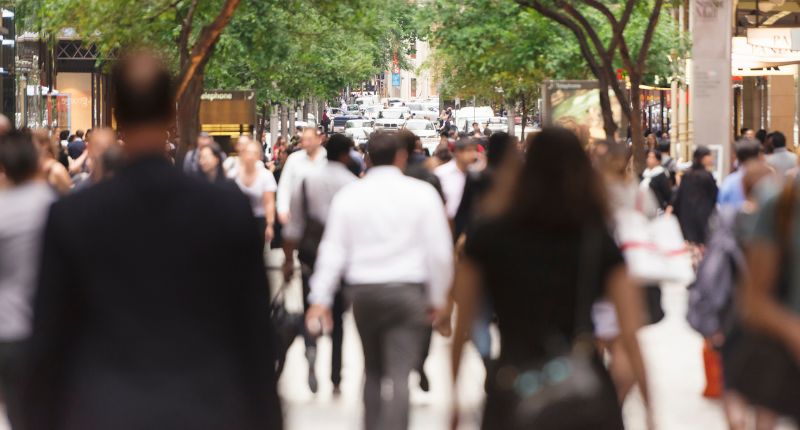
- The shutting down of banks in major Australian cities is freeing up prime retail leases.
- Mecca and bubble tea stores are expected to capitalise on that free space.
- Brick and mortar stores will have to adapt to be viable in the rise of e-commerce spending.
Sydney’s retail outlook is expected to undergo a shift to keep up with new consumer demands and demographic shifts, according to CBRE‘s latest research.
One notable aspect of this shift is the freeing up of city floorspace due to major banks closing up their branches.
According to CBRE’s Future Cities, Bank Branches, Beauty & Bubble Tea report, 1,308 branches closed across Australia’s major cities between FY17 and FY23.
Number of bank branches and ATMS in Australia’s major cities

CBRE head of research, Amita Mehra, said many of the top Australian banks were focusing on larger and more centrally located branches, resulting in the leasing of flagship-style floorspace on Sydney’s major strips.
“This consolidation has in turn freed up sought-after city floorspace and created opportunities for retailers to obtain prime retail leases,” said Mehra.
Beauty stores and the customers’ preferences
The report highlights that bubble tea companies and beauty companies are especially proactive in their zeal to snag brick-and-mortar stores.
CBRE’s research shows that Australia’s beauty industry has recorded steady growth over the past decade, with the cosmetic segment forecast to reach $5.9 billion by FY28.
Mecca, a major global beauty retailer with 16% market share, is planning to open an additional 108 stores across Australia and New Zealand over the next three years.
Despite being the largest player in the industry, Mecca only snags 6% of online cosmetic sales, emphasising their focus on in-store experiences.
According to CBRE, citing research from IBIS World, over 46% of shoppers still test and colour-match products in physical stores before purchasing online, noting that consultations and personalised services remain integral to the customer service journey.
Bubble tea and immigration
Sydney’s bubble tea market also shows a potential for strong growth due to international students returning.
CBRE’s head of retail leasing Australia, Leif Olson, said “Sydney is forecast to add 1.02 million residents by 2032, largely driven by migration from East Asian countries where bubble tea is highly popular.
“The high level of leasing enquiry from bubble tea brands proves that the category has not reached market saturation, with significant room for expansion.”
Leif Olson, CBRE
Furthermore, Knight Frank‘s Australian Retail Review September 2023 points out that the Australian retail market has historically benefited from strong population growth.
“Apart from a brief interruption during Covid, there has been a steady increase in numbers from a net inflow of 69,000 people in 1991-92 to 241,000 people in 2018-19,” the report reads.

Olson told The Property Tribune that food and beverage brands, particularly ones from Asia, are looking at rapid expansion into the market with groups looking at getting to 10 to 20 stores quickly.
“The luxury category is also very strong, with existing concepts looking at expansion into bigger stores as brands mature which is creating space for smaller luxury brands to open mono-branded stores.”
Making brick-and-mortar premier destinations
Knight Frank’s report also highlights that, to counter the rise of e-commerce, shopping centres will by and large need to go to some effort to be premier destinations in order to remain viable.
“For instance, Chadstone has invested $70 million in new dining and entertaining facilities,” the report reads.
“Other centres now have basketball courts, bowling alleys and sports bars, as well as improved food malls, cinemas and evening entertainment to make the whole experience more of a day out.
“This repositioning, and where needed repurposing, is reasserting bricks and mortar offers after a period of significant online and e-tailing focus; in-store purchases have regained popularity, but so has click and collect highlighting.”




